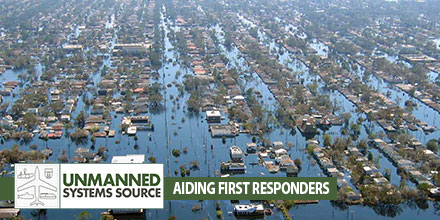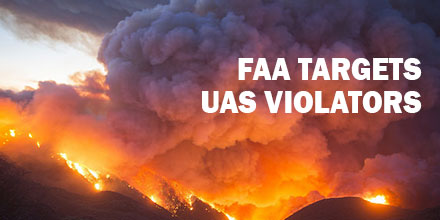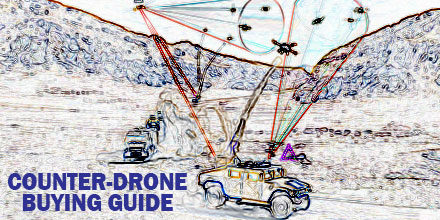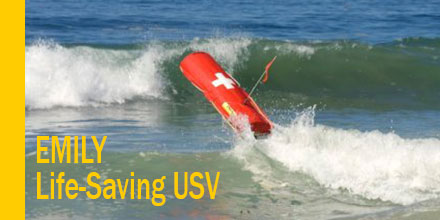 Unmanned advancements help first responder's efforts
Unmanned advancements help first responder's efforts
When disaster strikes we look to the men and women in emergency services to render aid to those affected. Thanks to advances in technology, first responders now have unmanned systems to help in those efforts.
Currently, unmanned helpers include Unmanned Aerial Vehicles and robots equipped with sensors, cameras, and even microphones.
Unmanned Systems impact on an industry
The impact of unmanned technologies in emergency and disaster situations continues to grow. Drones offer numerous advantages including: rapid deployment, the ability to assess dangerous environments from a safe distance, minimize risk to workers, and more.
Operators can change drone equipment to adjust to changes in the environment. A night-vision camera can be quickly exchanged for an infrared camera to read heat signatures of survivors. Programmable flight paths ensure complete coverage of an area.
All these advantages can significantly impact the number of lives saved in the event of a disaster.
Extending relief workers’ reach
UAVs are particularly helpful in reaching areas that are inaccessible.
Drones equipped with high resolution imagers can provide pictures, stream live video and create before and after snap shots of the affected site. Emergency workers can use this information to determine a plan of action – where to deploy, areas to avoid, identify survivors, and more.
What's more, drones can re-deploy to get the most accurate data in what is usually a very active and changing situation. Officials can use the data to continuously adjust and respond accordingly.
First responders aren’t the only ones who benefit from drone use in emergency situations. Drone manufacturers can use feedback from operators in the field to improve the overall performance of the product, thus improving capabilities for future relief efforts.
The challenge of the amateur operator
Unfortunately, the growing use of drones also has a downside. As more enthusiasts take to the skies, they can pose a risk to active emergency situations.
Many well-intended users believe they are providing assistance when, in fact, their efforts can hamper and even derail relief efforts. Such situations require formal training, expertise and collaboration with disaster and emergency relief officials. Operators functioning on their own volition are a risk to personnel on the ground.
Rescue organizations continue to advise drone enthusiasts, not officially involved in efforts, to restrain themselves and stay away from active emergency situations.
A growing array of unmanned systems
Rescue personnel can choose from an ever increasing array of unmanned systems.
For example, RoboSimian is a highly dexterous robot that can access areas deemed too risky for humans. This robot can scan, assess as well as manipulate its environment. Currently, RoboSimian can close a valve, pick up an object and remove impediments.
Certain situations require even more sophisticated technology – such as detecting movement under piles of debris.
Developed by NASA’s Jet Propulsion Laboratory, FINDER (Finding Individuals for Disaster and Emergency Response) utilizes low power radar to detect imperceptible movements beneath rubble. FINDER’s radar emits a low power radio signal that bounces off debris and changes if movement is detected.
As with robots and UAVs, FINDER is an important tool that enables rescuers to locate those in need and provide assistance quickly and efficiently.
A bright future
Given the advantages unmanned systems offer, emergency and disaster relief agencies will continue to adopt this technology. For the agencies involved in planning and executing search and rescue operations, the deployment of UAVs, robots and additional technology is a positive development.
 Pilots of unmanned aircraft who interfere with first responder efforts are now more likely to face serious civil penalties...even for first time offenses.
Recently, the Federal Aviation Administration (FAA) released guidance (PDF) for agency personnel who handle possible drone violations.
Now, all cases involving interference with first responder operations are referred to the FAA Chief Counsel’s office for possible enforcement action.
Pilots of unmanned aircraft who interfere with first responder efforts are now more likely to face serious civil penalties...even for first time offenses.
Recently, the Federal Aviation Administration (FAA) released guidance (PDF) for agency personnel who handle possible drone violations.
Now, all cases involving interference with first responder operations are referred to the FAA Chief Counsel’s office for possible enforcement action.

 Department of Homeland Security's SAVER program recently identified 13 counter-unmanned aerial systems that could be useful for emergency response.
To accompany this announcement DHS also issued a
Department of Homeland Security's SAVER program recently identified 13 counter-unmanned aerial systems that could be useful for emergency response.
To accompany this announcement DHS also issued a  The Duluth Fire Department in Duluth, Minnesota is considering purchasing the Emergency Integrated Lifesaving LanYard (EMILY) drone.
Hydronalix, located near Tucson, Arizona, created and manufactures the 24-pound unmanned water rescue vehicle.
The Duluth Fire Department in Duluth, Minnesota is considering purchasing the Emergency Integrated Lifesaving LanYard (EMILY) drone.
Hydronalix, located near Tucson, Arizona, created and manufactures the 24-pound unmanned water rescue vehicle.
 Unmanned advancements help first responder's efforts
When disaster strikes we look to the men and women in emergency services to render aid to those affected. Thanks to advances in technology, first responders now have unmanned systems to help in those efforts.
Currently, unmanned helpers include Unmanned Aerial Vehicles and robots equipped with sensors, cameras, and even microphones.
Unmanned advancements help first responder's efforts
When disaster strikes we look to the men and women in emergency services to render aid to those affected. Thanks to advances in technology, first responders now have unmanned systems to help in those efforts.
Currently, unmanned helpers include Unmanned Aerial Vehicles and robots equipped with sensors, cameras, and even microphones.
